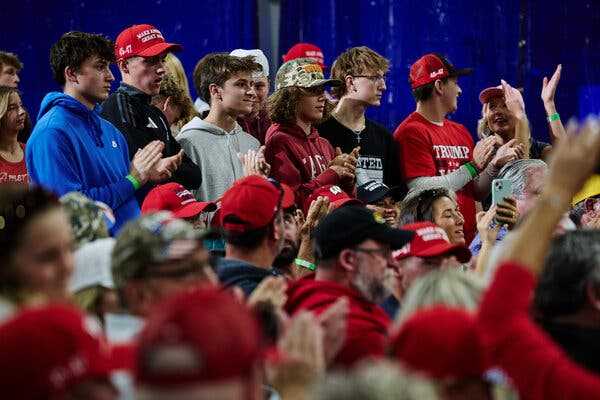The former president, whose personal account was banned after the Capitol riot, has refused to spend campaign money on Snapchat ads, effectively ceding the space to Kamala Harris.
Listen to this article · 7:41 min Learn more
- Share full article

With the election a dead heat, both the Trump and Harris campaigns have intensified their efforts to reach Gen Z and millennial voters who get their news through social media rather than traditional outlets.
Former President Donald J. Trump has made courting younger voters — and younger men in particular — a public pillar of his 2024 campaign. But he is conspicuously absent from one platform where they gather in large numbers.
Mr. Trump has not bought a single advertisement on Snapchat, effectively ceding the popular digital messaging platform to Vice President Kamala Harris, whose campaign has spent more than $5.3 million on ads there, according to the company’s disclosures.
Ms. Harris has used the uncontested space to highlight Mr. Trump’s anti-abortion record and to portray herself as a candidate for the future. Several of her ads are scored to the pounding rhythms of her theme song, Beyoncé’s anthem “Freedom.” Others are framed as “back-to-school assignments,” urging college-aged voters to do their homework on Mr. Trump’s right-wing policies.
The former president’s refusal to spend money on Snapchat — a turnaround from his previous campaigns — comes after a long-running feud with its California-based parent company, Snap, which banned his personal account shortly after the Jan. 6, 2021, assault on the Capitol.
Unlike other major tech platforms, Snap has not lifted the ban on Mr. Trump’s personal account, which has drawn angry pushback from his campaign. Despite not allowing Mr. Trump to post personally, the company has said it would sell his campaign political advertisements, which must all go through an internal fact-check.
With the election a dead heat, both the Trump and Harris campaigns have intensified their efforts to reach Gen Z and millennial voters who get their news through social media rather than traditional outlets and are unsure about whether they will cast a ballot in 2024. Turning those voters out could help either side eke out a narrow victory.
We are having trouble retrieving the article content.
Please enable JavaScript in your browser settings.
Thank you for your patience while we verify access. If you are in Reader mode please exit and log into your Times account, or subscribe for all of The Times.
Thank you for your patience while we verify access.
Already a subscriber? Log in.
Want all of The Times? Subscribe.
SKIP ADVERTISEMENT
Source: nytimes.com



